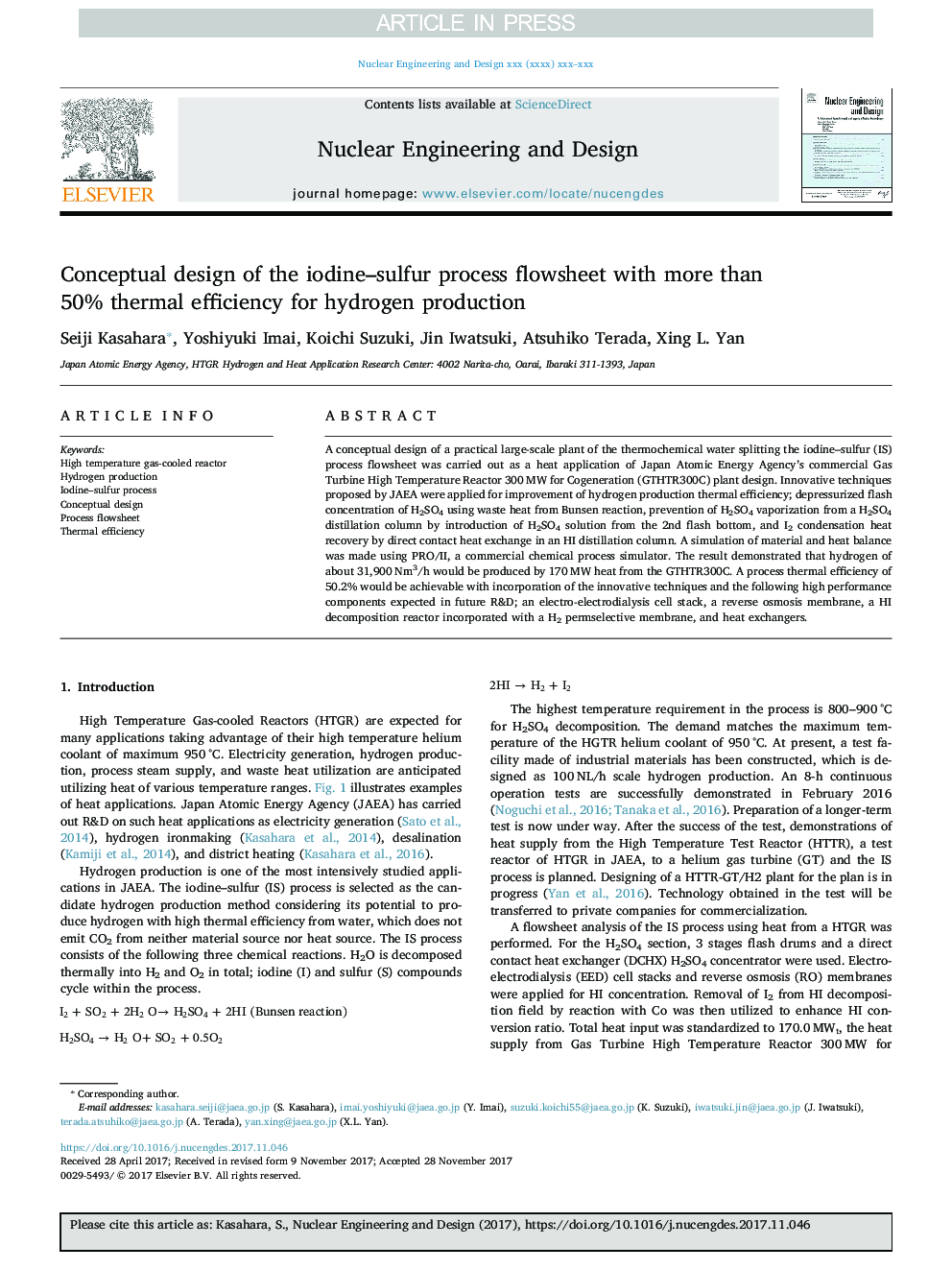| Article ID | Journal | Published Year | Pages | File Type |
|---|---|---|---|---|
| 6759363 | Nuclear Engineering and Design | 2018 | 10 Pages |
Abstract
A conceptual design of a practical large-scale plant of the thermochemical water splitting the iodine-sulfur (IS) process flowsheet was carried out as a heat application of Japan Atomic Energy Agency's commercial Gas Turbine High Temperature Reactor 300â¯MW for Cogeneration (GTHTR300C) plant design. Innovative techniques proposed by JAEA were applied for improvement of hydrogen production thermal efficiency; depressurized flash concentration of H2SO4 using waste heat from Bunsen reaction, prevention of H2SO4 vaporization from a H2SO4 distillation column by introduction of H2SO4 solution from the 2nd flash bottom, and I2 condensation heat recovery by direct contact heat exchange in an HI distillation column. A simulation of material and heat balance was made using PRO/II, a commercial chemical process simulator. The result demonstrated that hydrogen of about 31,900â¯Nm3/h would be produced by 170â¯MW heat from the GTHTR300C. A process thermal efficiency of 50.2% would be achievable with incorporation of the innovative techniques and the following high performance components expected in future R&D; an electro-electrodialysis cell stack, a reverse osmosis membrane, a HI decomposition reactor incorporated with a H2 permselective membrane, and heat exchangers.
Keywords
Related Topics
Physical Sciences and Engineering
Energy
Energy Engineering and Power Technology
Authors
Seiji Kasahara, Yoshiyuki Imai, Koichi Suzuki, Jin Iwatsuki, Atsuhiko Terada, Xing L. Yan,
